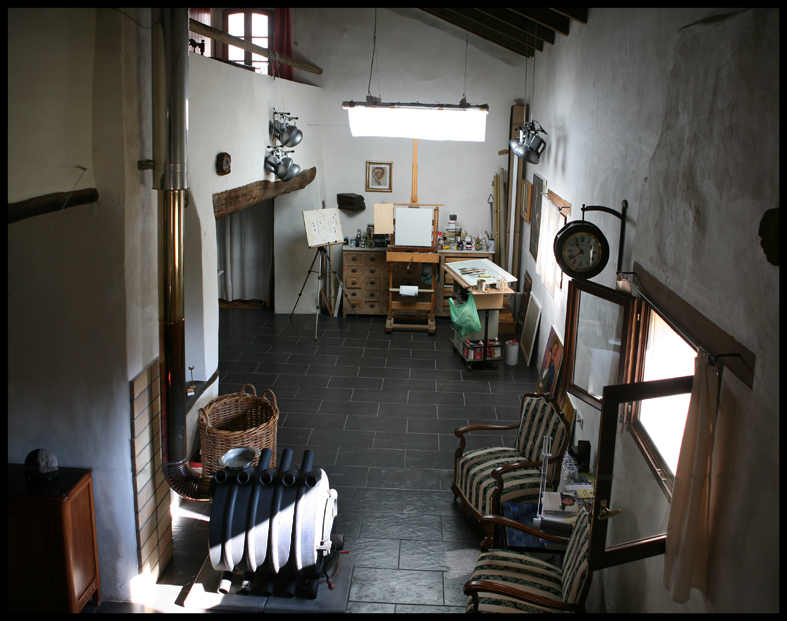The importance of good preparations.
“150 things can go wrong with a painting, beginning with what you had for breakfast”, Samuel Edward Oppenheim used to tell his students. That sounds exaggerated but I totally agree. I am quite convinced that a good portrait is preceded by good preparations.
Everyone will say: yes, that’s pretty obvious. Yet I think that this aspect is often underestimated. I compare it with a high jump athlete who wants to establish his personal best. That he certainly not will try on some lost noon, thinking let me see if I happen to break some record. No, he’s training months, if not years. So my question is: do you want to deliver a good performance or not? If yes, then do everything possible!
Portrait Painting probably is not easy. There’s talent involved, you always hear. But for good preparations no talent is wanted at all, only a clear mind. And I assure you, to learn portrait painting, more than half of all the energy goes into preparation.

A new portrait, a new challenge.
What is a good preparation? Some answers. Imagine it is about a commissioned portrait. It all starts with taking pictures of the model. I do not go straight to the sitters home, take some pictures and run back to my easel.
My checklist for photography:
I first make a previous appointment with the model to get acquainted. Not that I already want to see how the model looks, no I want the sitter gets to know me. Eventually, he or she has to give me something that I can give back in the the portrait. So trust is involved here. Usually the next day I go back to take the photographs.
1. Is my photo equipment complete? 2. Do I have everything: lights, memory cards, are the batteries charged?
3. Do I know the exact address of the model, in order to arrive at the appointment relaxed and at some time sharp.
Once home I review the photographs carefully and make sure that I make good prints
4. Is the color right? 5. Is the contrast good? Don’t make the mistake to start with a bad printed image on poor quality paper thinking I will manage!
Usually I spend one day in making good prints.
The checklist for painting.
6. Is my studio clean and tidy? 7. Do I have good canvas or panel and is it treated with good primer? 8. Do I have the perfect composition? 9. Do I have the drawing properly put on the canvas? 10. The palette, is it cleaned well? No left-overs and old crap of previous work? Pamper yourself with clean stuff! 11. Are the brushes properly clean? Not a worn out bunch? 12. Do I have all oil colors and medium that I will need?
And finally, most important: Am I fresh, relaxed and able to spend the whole day painting without restraint?
Coming back to the high jump athlete: Don´t set the bar so high that you can walk easily underneath!
Next time I will tell you about a checklist that I use at the end of a painting day.

Yes, way to many times we might be tempted to run right into painting,all to eager to get started. But with the forgoing thoughts,which is essential,a great portrait will appear. Just like the athlete,we must be limber and have a certain amount of controlled excitement.